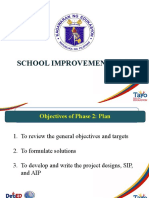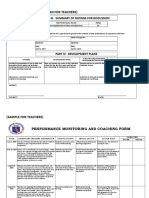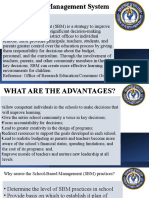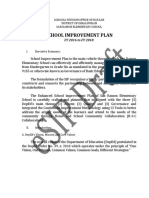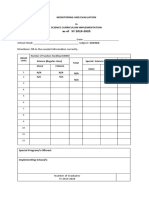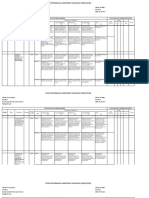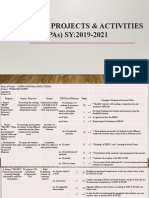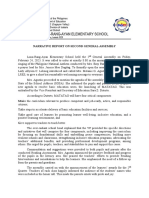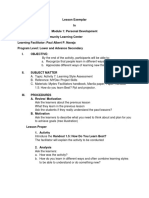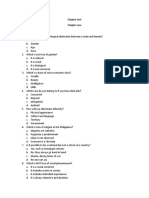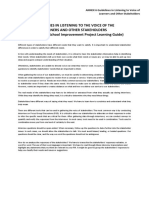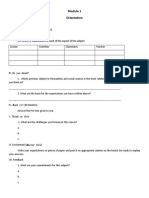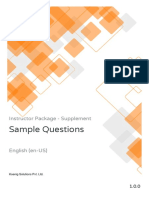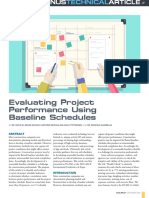100% found this document useful (2 votes)
166 views23 pagesSchool Improvement Plan Guide
The document outlines the process for developing a School Improvement Plan (SIP) according to DepEd guidelines. It involves a continuous cycle of assessing needs, planning solutions, implementing plans, and checking progress. Specifically:
1. The SIP development process is mandated by law and guided by principles such as being evidence-based and involving stakeholders.
2. The SIP cycle involves three phases - assess needs, plan solutions, and act on plans - carried out over three years and reviewed annually through Action Improvement Plans (AIPs).
3. The process is meant to be collaborative, iterative and focus on continuous improvement to address the evolving needs of students.
Uploaded by
Lora Lee Hope ArazaCopyright
© © All Rights Reserved
We take content rights seriously. If you suspect this is your content, claim it here.
Available Formats
Download as PPTX, PDF, TXT or read online on Scribd
100% found this document useful (2 votes)
166 views23 pagesSchool Improvement Plan Guide
The document outlines the process for developing a School Improvement Plan (SIP) according to DepEd guidelines. It involves a continuous cycle of assessing needs, planning solutions, implementing plans, and checking progress. Specifically:
1. The SIP development process is mandated by law and guided by principles such as being evidence-based and involving stakeholders.
2. The SIP cycle involves three phases - assess needs, plan solutions, and act on plans - carried out over three years and reviewed annually through Action Improvement Plans (AIPs).
3. The process is meant to be collaborative, iterative and focus on continuous improvement to address the evolving needs of students.
Uploaded by
Lora Lee Hope ArazaCopyright
© © All Rights Reserved
We take content rights seriously. If you suspect this is your content, claim it here.
Available Formats
Download as PPTX, PDF, TXT or read online on Scribd
/ 23


